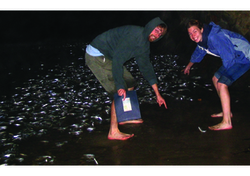Search for SIDA+SP.+(MURRAY+SPRINGS+R.W.JOHNSON +MRS919) returned 5,698 results.
Refine results
Refine results
Section
- Locality (4,733)
- Species (341)
- Region (249)
- Common Name (222)
- Biodiversity Science project (72)
- Site Page (30)
- Data provider (27)
- Data resource (13)
- Institution (7)
- Support article (3)
- Collection (1)
Image available
- Yes (220)
Taxonomic status
- Accepted (182)
- Synonym (63)
- Heteroptypic Synonym (49)
- unreviewed (25)
- Homotypic Synonym (12)
- Miscellaneous Literature (3)
- Pro-parte Synonym (3)
- unreviewedSynonym (2)
- Excluded (1)
Conservation status in Australia
- Endangered (7)
- Critically Endangered (2)
- Vulnerable (2)
- Extinct (1)
Conservation status in ACT
- Endangered (2)
- Vulnerable (1)
Conservation status in NSW
- Endangered (2)
Conservation status in QLD
- Endangered (1)
Conservation status in VIC
- Endangered (6)
- Critically Endangered (2)
- Vulnerable (2)
- Extinct (1)
- Threatened (1)
Conservation status in TAS
- Endangered (1)
Conservation status in SA
- Rare (3)
Conservation status in WA
Conservation status in NT
- Endangered (1)
- Vulnerable (1)
-
Biodiversity Science project: Brown Bag Lunch Series - Bats in Acadia and Maine
Until a few years ago, Acadia National Park and mid-coast Maine were home to several species of bats that were present each year from late spring through fall. Five years ago the once common hibernating bat species became inflicted with the cold-loving fungus Pseudogymnoascus destructans (Pd) or White Nose Syndrome (WNS) marking the start of a precipitous decline in these populations...
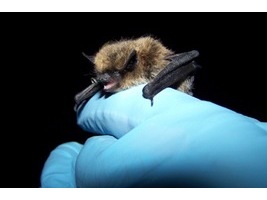
-
Biodiversity Science project: Citizen Science Day 2018: Beluga Safari
On Saturday, April 14th, 2018 (6:30 a.m. - 9:00 a.m.), head out at sunrise to 1-3 shore-based viewing stations along Upper Turnagain Arm in Alaska’s Cook Inlet with Beluga Whale Alliance (BWA), Cook Inletkeeper and Four Valleys Community School to celebrate the third-annual Citizen Science Day 2018 and conduct a real field monitoring session to watch for belugas! *Note: Monitoring session is timed around the peak high tide to maximize potential for beluga sightings. We know it’s early.....

-
Biodiversity Science project: Acoustic Bat Monitoring
Citizen Science Center volunteers assist the Wisconsin Department of Natural Resources with their Acoustic Bat Monitoring Program. Volunteers attend a training workshop during the spring where they learn how to use an AnaBat detector, which records bat calls using a personal digital assistant that has a global positioning system to record the location and time. The bat detector translates the bat's call "on the fly" to a frequency that humans can hear...

-
Biodiversity Science project: American Woodcock Singing-ground Survey
The American Woodcock Singing-Ground Survey, conducted by the U.S. Fish and Wildlife Service, exploits the conspicuous courtship display of the male woodcock. The survey consists of numerous routes in the eastern half of the U.S. and Canada, which are surveyed in the spring. Counts of singing male woodcock along the routes provide an index to woodcock abundance, and are used to estimate woodcock population trends for states, provinces, management regions, and the continent...
-
Biodiversity Science project: The Snake Count
The Snake Count needs citizen scientists to map and track snake distributions across North America. This is your chance to take an active role in in snake conservation. Usual Count Dates (check website for most updated details): Spring: May 12-20 Fall: September 15-23 The goal of the Snake Count is to document every species of snake that occurs in the United States in a single time period...
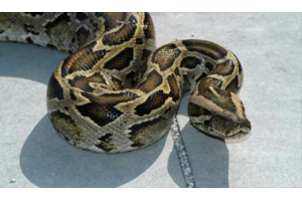
-
Biodiversity Science project: Jay Watch
Jay Watch needs volunteers in Florida to conduct surveys of the charismatic scrub-jay, the only Florida bird species that lives nowhere else on earth. Volunteers play recorded, territorial scrub-jay calls to attract the birds, then observe and record the number of family groups, adults and juveniles. Volunteers note any band color combinations, helping track individual birds. Information is recorded on aerial maps by volunteers in the field and is then computerized...
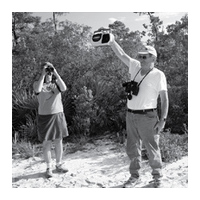
-
Biodiversity Science project: Alpine Snowpatch Vegetation Monitoring Project
Snowpatch vegetation communities comprise a unique assemblage of high mountain plants and animals, many of which are listed as threatened species, that are restricted to areas where snow persists into summer, well after it has melted out from the rest of the alpine landscape...

-
Biodiversity Science project: Snapshots in Time
Snapshots in Time is a long-term Citizen Science project aimed at mobilizing people to monitor the timing of Spotted Salamander (Ambystoma maculatum) and Wood Frog (Lithobates sylvaticus) breeding throughout the respective ranges of these species. The purpose of this project is to use the data collected by on-the-ground citizens year after year to investigate possible effects of climate change on the timing of reproduction...
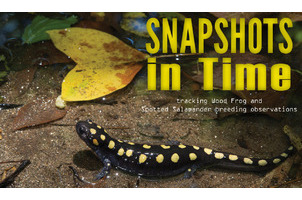
-
Biodiversity Science project: Counting On The Corridor
Join us for our statewide bioblitz for the opportunity to hike with experts, experience wild Florida, and learn about the Florida Wildlife Corridor! What's a bioblitz? Participants come together to find, COUNT, and identify as many species of plants, animals, microbes, fungi, and other organisms as they can spot! You can learn more by watching this short video. Where is this event taking place? Our bioblitz will be hosted in three different locations across the state: St...

-
Biodiversity Science project: Grunion Greeters: Citizen Science on the Beach
Volunteer “Grunion Greeters” experience a grunion run and witness the remarkable behavior of the silvery little fish as they come completely ashore to spawn. Volunteers monitor local beaches and collect basic information for about two hours during a grunion run. Peak spawning season typically occurs from April through June. The grunion runs occur late at night, twice a month, after the highest tides associated with a full or new moon...
